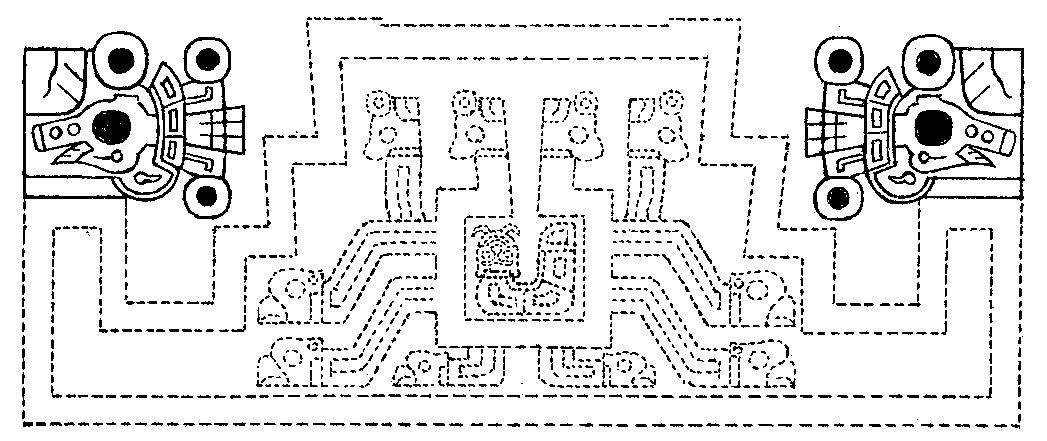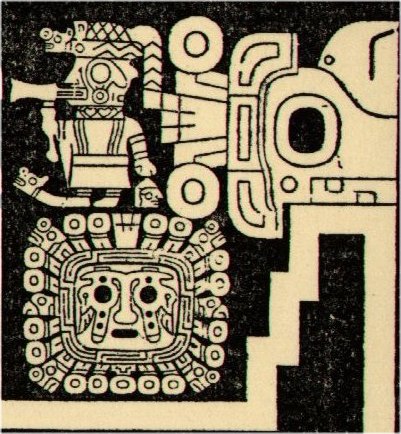|
"Schematic drawing of the 'socle of the central figure of the Sun Door' on which can be seen the 'eyes' with 'Star' signs on the coronas and the 'ring nose' as in the position of the constellation Southern Cross at nightfall at the solstices. (Esoteric science known possibly only to the 'initiated'.)" (Posnansky) This 'socle' is located underneath the 'September Sun'. According to the program SkyGlobe I find that we must identify the four stars suggested by Posnansky as (I refer to the left figure above and go from top left clockwise):
My identifications in this table are concluded exclusively based on these four stars' internal arrangement into a pattern. Their different angles and the visual distances between them makes no other alternative possible. As a confirmation we can see that the 'black eye' indeed corresponds to the 4th star which is much less visible (magnitude 3.1). However, Gacrux should according to its 'eye' be brighter than 1.6 (indeed brighter than Acrux) and according to Allen: "γ, the uppermost star, is on the horizon of the Lowe Observatory, at an elevation of 3700 feet, in latitude 34o 20´. Gould thinks it variable, for it has been variously estimated, even by the same observer, as from 1.8 to 2.4." Delta Crux being so conspiciously different from the other three stars creates an assymmetry which makes it easy to use Crux as a 'time-piece'. And - taking one more step in this 'reflection' - we could even eliminate Mimosa from the 'time-piece'. It is enough to check where Delta Crux is located in relation to the central 'pole' Acrux-Gacrux. Possibly that is what has happened in the 'equinox-heads':
But no - that must be wrong, because the 'corona' we had identified in the 'socle' above as being adorned with Mimosa and Acrux, the two brightest stars. Gacrux, furthermore, is probably a variable star and not to be trusted. If we think of Crux as a 'candelabra', evidently we must identify the three 'flames' with (from left to right) Gacrux, Mimosa and Acrux, because the 'foot' must be Delta Crux. That possibly explains the 'circle' at the base of the 'Candelabra of the Andes', this 'circle' marking where to look for that difficult to find star. The rectangle, in the middle of which this circle is located, presumably marks the 'foot' which the 'candelabra' is standing on to make it stable, and the 'circle' a hole to put the central 'pole' into. On the back of Pachamama there possibly are located two 'candelabras' of a similar kind:
The 'rectangle' is there too, with the 'mouth' as the 'hole'. Posnansky says: "Above this head, like a 'Crown', there is a large 'Tripartite Ray', which ends in three 'Wings'." I don't find it difficult to equate 'wings' with 'flames' (= the light from stars), rather the opposite: a confirmation that we are on the right track and that 'feathers' in the rongorongo script may mean 'flames', possibly even the light from stars. |


